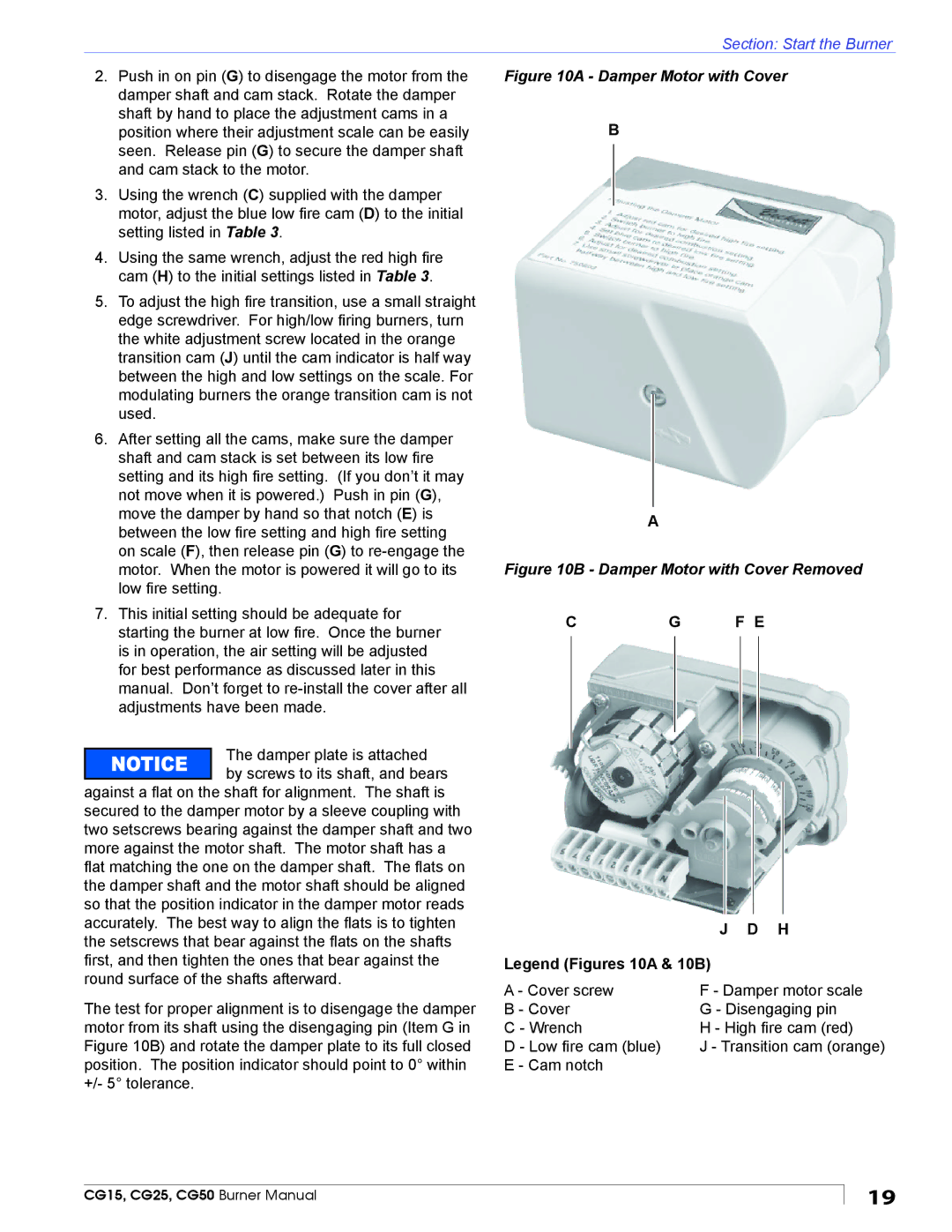CG25, CG50, CG15 specifications
Beckett CG25, CG15, and CG50 are advanced burner systems designed for optimal performance in residential and commercial heating applications. Developed with state-of-the-art technology, each model offers distinct features and characteristics tailored to meet varying demands.The Beckett CG25 is engineered for medium-output applications, providing reliable heating with exceptional efficiency. One of its standout features is the high-performance combustion head which enhances the air-fuel mixing process, leading to improved burn quality and reduced emissions. Additionally, the CG25 incorporates a fully automatic control system that allows for precise temperature regulation, contributing to energy savings and lower operational costs.
The Beckett CG15, meanwhile, is ideal for smaller residential systems. It stands out for its compact design, making it easy to install in tight spaces. Despite its size, the CG15 does not compromise on performance. It features advanced flame retention technology, which ensures a stable and efficient burn, while its low noise operation adds convenience for users. The CG15 also benefits from a robust safety system that includes a lockout feature to prevent unsafe operation.
On the higher end, the Beckett CG50 is designed for larger heating applications and is capable of generating high outputs while maintaining fuel efficiency. Its innovative design encompasses a three-stage combustion process that enhances efficiency and minimizes emissions significantly. The CG50 also features advanced diagnostic capabilities, providing real-time feedback and enabling proactive maintenance, which increases reliability and prolongs equipment life.
All three models are built with durability in mind, utilizing high-quality materials to withstand harsh operating conditions. They are compatible with various types of fuel, including oil and gas, making them versatile solutions for a broad range of heating needs. Beckett's commitment to sustainability is evident in the design of these burners, as they comply with stringent environmental regulations.
In conclusion, the Beckett CG25, CG15, and CG50 systems represent a blend of innovative technology, efficiency, and robust design. Their unique features cater to different heating demands, making them suitable for various applications while ensuring both performance and reliability. Whether for residential or commercial use, these burners are ideal choices for anyone looking to invest in a high-quality heating solution.

